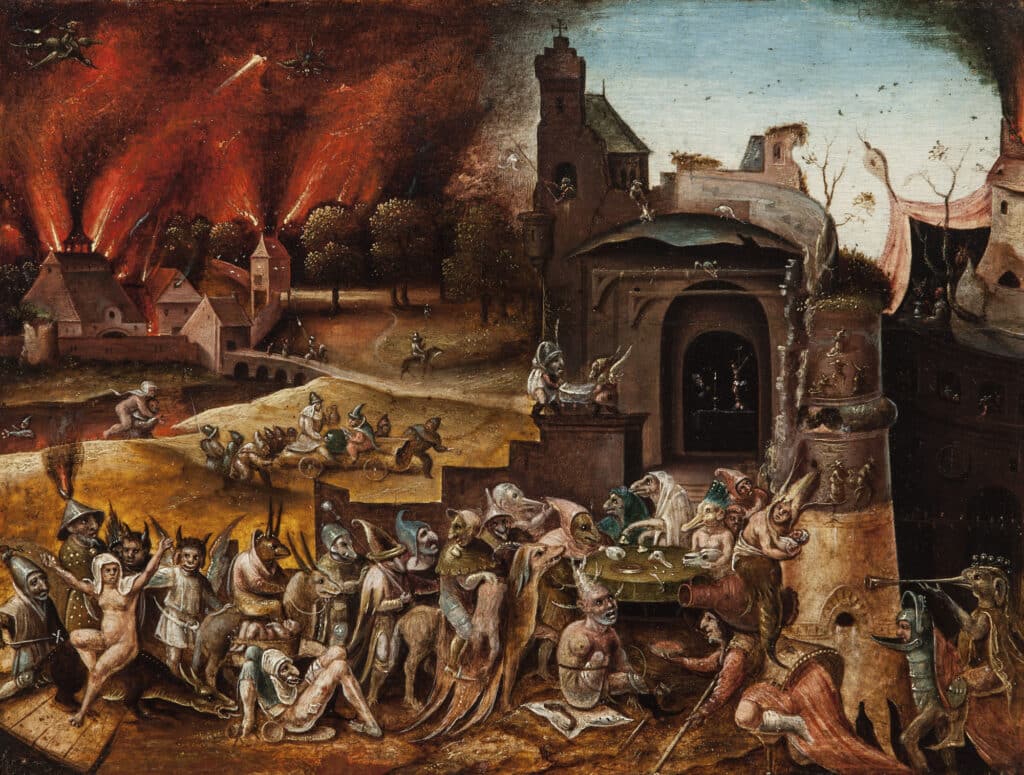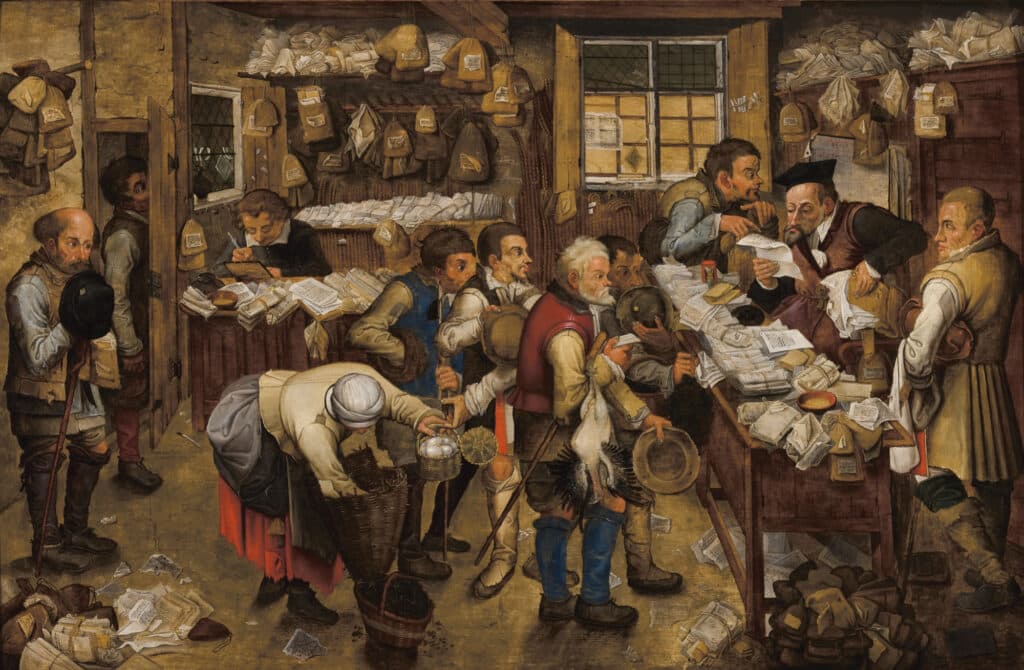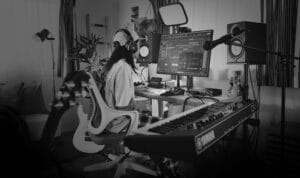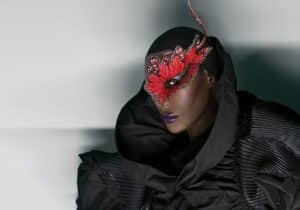Opening on 20 July 2024, Reimagining the Renaissance is a sweeping and thorough exploration of one of the most crucial, famous and vibrant periods in art history. The free exhibition runs at the Art Gallery of South Australia until 13 April 2025.
Drawn from AGSA’s important collection, alongside rarely seen private loans, the exhibition features over 140 unrivalled Renaissance works in a wide range of mediums from painting, sculpture, printmaking, coins, drawing and embroidery to printed books. Included are some works by the period’s most celebrated artists such as Albrecht Dürer, Pieter Breughel II, Hans Holbein and Benvenuto Tisi, who engaged with a wide variety of subject matter from religious themes to powerful aristocratic portraits; allegorical scenes and landscapes as well as beautiful objects of decorative art and design.

Throughout art history, the Italian Renaissance has taken centre stage and is regarded as one of the most important periods of artistic innovation and development, often overshadowing broader European art occurring at the same time. Reimagining the Renaissance explores the Northern and English Renaissance periods together with showcasing celebrated Italian masters. It provides an account of the revolutionary changes in art across Europe.
Traversing a long cultural rebirth, Reimagining the Renaissance draws out important ideas which allow us to continue to engage with this important, albeit distant, time in art and society. The exhibition tackles world-changing politics and power dynamics, religious reformation and the rise in secularism, myth and allegory and everyday life in the fifteenth and sixteenth centuries.
The Honourable Andrea Michaels MP, Minister for Arts says, ‘Travel back in time and experience the magic of the Renaissance era. This carefully curated exhibition from AGSA’s remarkable collection features stunning works of art that will transport you to a celebrated era. Bring your family and friends for a time-travelling experience outside of the classroom.’
Tansy Curtin, AGSA’s Senior Curator of International Art, Pre-1980 and curator of the exhibition says, ‘Reimagining the Renaissance will introduce and challenge visitors to the notion of what is the Renaissance and the power of art to influence the course of history. The European Renaissance witnessed profound artistic and cultural change, a rebirth following the devasting loss of knowledge in the so-called ‘Dark Ages’. This new and transformative period in art, notions of form, colour and perception changed fundamentally and an artistic revolution was born, most notably in the understanding of composition and realism and the rise of humanism.’
Art Gallery Board Chair, Sandy Verschoor says, ‘Don’t miss this opportunity to see Reimagining the Renaissance, this exhibition showcases AGSA’s incomparable Renaissance collection and the incredible skills and craftmanship of its artists.’
AGSA is renowned for its care and conservation of the collection, with conservation playing a pivotal role in the exhibition. Tansy Curtin has worked extensively with the incredible team of conservators at Artlab to conserve and stabilise some of the rare and fragile works.
A highlight of the conservation includes the cleaning of two 1480 marble angels, from the school of Mino da Fiesole. These carved marble reliefs were acquired for AGSA by H.D. Molesworth, a keeper (or curator) at the Victoria and Albert Museum in 1950. Through research, it has become apparent that at least one of the reliefs was even older than the identified date.
‘The conservation of the works of art helps AGSA tell the stories behind the works, and aids in our understanding of the materials and techniques used by artists at the time. Through AGSA’s commitment to conserving works of art we can ensure that they remain in excellent condition and can be enjoyed by future generations,’ Curtin said.
Artlab’s Conservation Project Manager Abby Maxwell-Bowen enjoyed giving the angels a much needed clean to bring back some of their former glory. She says, ‘It was a privilege to be tasked with working on AGSA’s angels, delicately removing years of dirt and grime to reveal their original beauty.’
Highlights on display in Reimagining the Renaissance include:
School of Mino da Fiesole, Angel c.1480
This pair of carved marble angels were acquired for the Gallery in 1950 by H.D. Molesworth, a keeper at the Victoria & Albert Museum, who was acting as an agent for AGSA in London. Very little is known about the history of these works prior to their purchase in 1950, although the vendor suggested they came from the Pazzi Chapel in Florence. With their delicate carving and particular attention on the faces of the angels, these sculptures espouse many of the artistic virtues of the Italian Renaissance. These sculptures are not simply representations of generic figures but rather are lifelike depictions of real faces. In preparation for Reimaging the Renaissance these angels have undergone significant conservation treatment including delicate steam cleaning, using poultices to reduce ferrous staining and repair of an old break.
After Hans Holbein The Younger, King Henry VIII
Hans Holbein’s portrait of Henry VIII, originally commissioned for the Palace of Whitehall, has become the most recognisable image of this infamous monarch. Several different versions of this painting exist and while AGSA’s painting is not likely to be painted by Holbein himself it was painted during Henry’s lifetime. Today Henry VIII is one of the most notorious members of the British royal family, known of course for his six wives, or perhaps more importantly his ability to get rid of them!
Recent scientific assessment has shown that there is no drawing beneath the paint layer but instead there is evidence of small dots of chalk, known as pouncing. This technique was a method of transferring a drawing from paper onto the wood panel – small holes were made in the paper outlining the image and then chalk is pushed through – removing the need for comprehensive underdrawing.
Unknown maker, Standing salt
In the Tudor and Elizabethan periods, salt was a highly-prized commodity and the salt cellar or standing salt would be placed next to the most important person at the dining table. This extraordinary silver-gilt standing salt is one of only eight of this style (rectangular) to survive today and has led an interesting life before joining AGSA’s collection in 1964. In the collection of the well-known banking family, the Rothschilds, for several generations, the standing salt was sold by the family in 1940. From 1933 the Rothschilds were heavily involved in supporting Jewish people escape the Nazis and established the Central British Fund, but by 1940 this organisation was financially struggling, resulting in the sale of this object and many others from the Rothschild family collection. Only two years later the standing salt was nearly lost in war-time bombing but luckily survived and was eventually purchased by the Penfold-Hyland family who donated it to AGSA in 1964.
Patience and the seven Christian virtues
Textiles played an important role in Renaissance Europe and tapestries and embroideries were often valued more highly than paintings in terms of interior decoration. Large textile works served a dual purpose; they enlivened and decorated rooms but also offered insulation for added warmth in cold, drafty castles and manor houses. The virtues were a popular subject in sixteenth century print making and are indicative of the rise in importance of humanist philosophy as a result of the Lutheran Reformation. While not a well-known subject in English embroidery at the time, it is thought this particular example might refer directly to the virtues of the Virgin Queen, Elizabeth I, with the inclusion of Tudor and eglantine roses, the latter a recognised symbol of the Queen.
Albrecht Dürer, Knight, death and devil
Albrecht Dürer exemplifies the Northern Renaissance. A highly talented artist, Dürer worked across a variety of media yet it is his print making that he is best known for today. Dürer embraced the medium of print making as a way of readily disseminating his art across Northern Europe and ultimately brought many of the ideas of the Italian Renaissance to the German art world. Considered one of Dürer’s three Meisterstiche (master engravings) the meaning of this print remains ambiguous today, although many historians propose that the knight is based on Erasmus’s Instructions for the Christian Soldier. The ongoing importance of this remarkable print evidences Dürer’s incomparable artistic skill in engraving, a skill still coveted today.
Leading up to Reimagining the Renaissance is Grand Mix by Inook, part of City Lights at Illuminate Adelaide. AGSA’s Renaissance masterpieces are brought to life by the creative minds of France’s Inook. The light and sound experience takes well-known figures from Reimagining the Renaissance, lifts them off the canvas, and uses AI technology to bring them to life. During nightly collective karaoke sessions on the forecourt, experience paintings that sing and move across AGSA’s historic façade. Grand Mix runs from 5 to 21 July, 5.30–10.30pm.
Throughout the exhibition season, visitors will have the opportunity to participate in exclusive ticketed bespoke tours and drawing classes, led by respected Adelaide thinkers and artists. These unique experiences allow visitors to learn more about the history and techniques of Renaissance art. The drawing classes will be tailored to suit all skill levels, from beginners to advanced artists, ensuring that everyone can participate. Tickets for the bespoke tours and drawing classes can be purchased at agsa.sa.gov.au
Reimagining the Renaissance is on display in Galleries 8–11 at the Art Gallery of South Australia from 20 July 2024 to 13 April 2025.

















